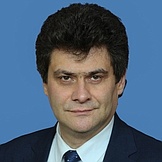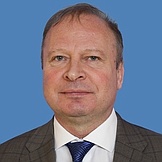Regional flags and emblems


PROFILE
Established 17 January 1934
Capital Yekaterinburg
The Sverdlovsk Region is part of the Urals Federal District
Area 194,200 sq km
Population 4 218 200 (2025)
Ethnic groups
(2020 national census, %)
Russian – 92,32
Tatar – 2,40
Other – 5.28
Administrative divisions (2024)
Municipal districts – 5
City districts – 68
Rural towns – 5
Rural districts – 16
Geography and climate
The Sverdlovsk Region lies in the northern and central Ural Mountains, which are part of the Ural Mountain Range, and the East European and West Siberian plains. The boundary between Europe and Asia runs through the region.
The Sverdlovsk Region is about 560 km from west to east and about 660 km from north to south.
The Sverdlovsk Region borders the Republic of Bashkortostan, the Komi Republic, the Perm Territory, the Kurgan, Chelyabinsk and Tyumen regions and the Khanty-Mansi Autonomous Area – Yugra.
There are over 18,000 rivers, 135 reservoirs, over 1,200 ponds and 2,500 lakes in the area. The main rivers are the Tavda, Tura, Iset and Chusovaya. The largest reservoirs are the Reftinskoye, Beloyarskoye, Nizhneturinskoye and Isetskoye.
The climate is continental. January temperatures average −17°C; July temperatures average 17.1°C. Annual precipitation is about 500 mm.
The Sverdlovsk Region is a home for the Visimsky State Natural Biosphere Reserve, the Denezhkin Kamen State Nature Reserve and the Pripyshminskiye Bory National Park.
Government
The legislative branch is represented by the Sverdlovsk Region Legislative Assembly, which is the permanent, representative and only body of legislative authority in the region.
The Sverdlovsk Region Legislative Assembly has 50 deputies elected for five years, with 25 of them running in single-mandate constituencies and the other 25 elected in proportion to the number of votes cast for lists of candidates nominated by electoral associations.
The current Legislative Assembly was elected in September 2021. Its term expires in September 2026.
The executive branch in the Sverdlovsk Region is represented by the Governor of the Sverdlovsk Region, the Government of the region and other executive agencies in the region. The Government of the Sverdlovsk Region is the supreme and permanent body of executive authority in the region.
The Governor of the Sverdlovsk Region is the region’s highest-ranking official, who leads the executive branch in the region and heads the regional Government, determines its policies and is responsible for its performance. The Governor is elected for five years by Russian citizens who permanently reside in the region. The term of office of the Acting Governor – until the person elected Governor of the Sverdlovsk Region takes office.
Economy and natural resources
The Sverdlovsk Region is a large economically developed area with a high level of business, cultural and civic activity. It is one of the regions with the strongest prospects for growth: based on most of the socioeconomic indicators, it ranks among the top ten regions in Russia.
In terms of proven and estimated reserves of various minerals, it is one of Russia’s leading regions and is also one of the country’s oldest mining regions.
Today, the Sverdlovsk Region supplies most of the vanadium, bauxite, chrysotile asbestos, iron ore and fireclay produced in the country. It has large reserves of nickel ore, precious metals, mining chemical feedstock, non-metallic minerals for metallurgy, semiprecious stones, underground mineral and fresh water and practically unlimited resources for building materials. The region has deposits of black and brown coal, chromites and manganese and, according to certain estimates, it has possible oil and gas reserves.
Industrial output accounts for more than 40% of the regional GDP.
Ferrous and non-ferrous metallurgy (copper, aluminium and nickel production) and mechanical engineering are the region’s leading industries. Other key sectors include the chemical, timber, woodworking, textile and asbestos industries, as well as the manufacture of art works from the Ural semi-precious stones at the Yekaterinburg-based Ural Semi-Precious Stones Company.
Key products manufactured in the region are trucks, carriages, excavators, automatic forging machines, power transformers, diesel engines, diesel generators, steam and gas turbines, large electric machines, oil-field and drilling equipment and electric motors.
Agriculture accounts for about 2% of the regional GDP. The key sector is livestock farming with a focus on beef cattle raising and dairy farming, as well as poultry and pig farming, goat and Romanov sheep breeding. Almost half of the cultivated land is used to grow fodder crops, including perennial grasses, corn for animal feed and root crops, and the rest to grow cereals, including wheat, barley and oats, while potatoes and vegetables are sown on about 5% of the cultivated land.
The Sverdlovsk Region is one of the country’s major transport hubs. The density of its railway and road systems is above the national average, with the Trans-Siberian Railway running through the south of the region.
Due to its cooperation with over 150 countries, the Sverdlovsk Region ranks among Russia’s top ten regions in terms of foreign trade.
Culture and tourism
The Sverdlovsk Region is known for its achievements in all areas of culture, including theatre, music, fine arts, circus, museums, libraries, traditional folk culture, entertainment and leisure, filmmaking and the publishing industry.
The Sverdlovsk Region has a rich historical and cultural heritage. There are about 3,000 cultural heritage sites in the area, most part of sites under state protection. There are 14 historical cities in the area, including Yekaterinburg, Verkhoturye, Nevyansk, Nizhny Tagil, Kamen-Uralsk and Alapayevsk. A tourist route, the Ural Silver Ring, runs through these remarkable and beautiful cities, each with its own history, lifestyle and image.
The historical and cultural potential of Verkhoturye could be used for spiritual revival and promotion of educational, tourist and recreational activities. Established in 1598, the city remained the region’s military, economic and cultural outpost for almost 200 years. Tsars stopped there on their way from Russia to Siberia. The oldest active monasteries in the Yekaterinburg Eparchy, the St Nicholas Monastery and the Intercession Convent, are located in Verkhoturye.
People in the Sverdlovsk Region make every effort to keep folk traditions alive. Annual festivals and other public events held in the region aim to shape a regional identity and teach respect for the spiritual values of other people. Numerous local museums showcase splendid collections of unique items made by craftsmen and praised so vividly and colourfully by author Pavel Bazhov in his works. They include items made of stone, cast iron, painted trays and tableware made of embossed copper.
The diversity and beauty of local nature offer plenty of opportunities to develop active and environmental tourism. Every year, mountain and rock climbers and pot-holers are drawn by the karst caves, cliffs and rocks on the Chusovaya, Tagil and Naiva rivers and Lake Peschanoye. There are 17 Alpine ski resorts in the area.
Therapeutic and recreational tourism is also very popular due to the climate, as well as mineral water of various chemical composition and sapropelic mud. The most popular spa resorts in the area are famous for their natural mineral water (Obukhovsky and Nizhniye Sergi), thermal springs (Akvarel and Rodnik) and mud-bath therapy (Samotsveti).


